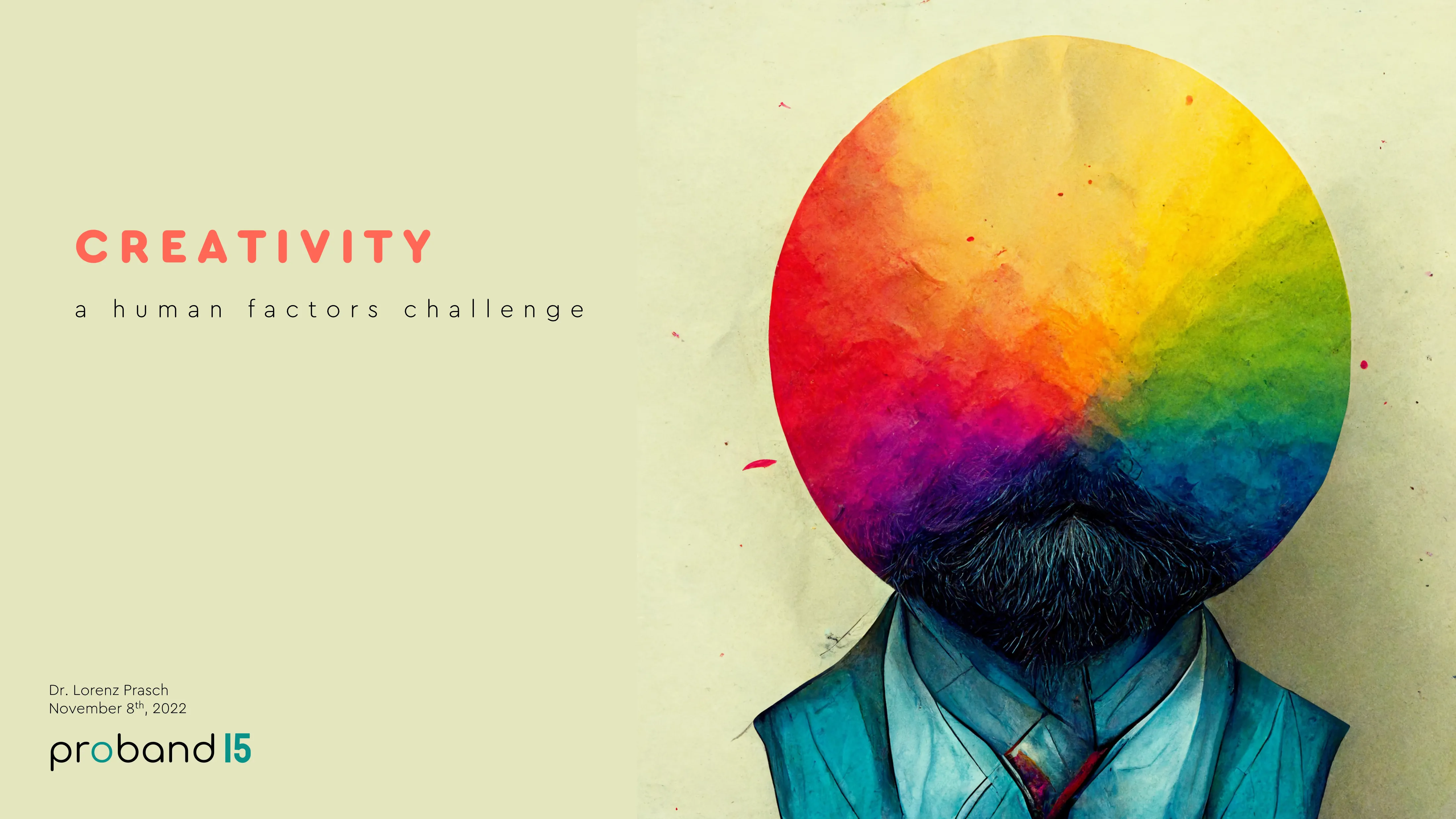⟵ back to the overview
Creativity - a human factors challenge
What actually is creativity, and why is it so important?
by Lorenz Prasch
In his presentation, held at the U.S. National Aeronautics and Space Administration (NASA), Lorenz describes what creativity is (and what it is not) and why it is so important. In the process, he explains why artificial intelligence cannot really act creatively and gives an overview of current developments in the areas of creativity measurement and amplification.


|
presentation length: 45 mins
Link to the video →
Our world is changing rapidly, and work follows suit. Considering the traditional division of work in physical and mental labor, it is primarily physical labor that has been systematically analyzed and optimized over the last century. This made it possible to break down many manual tasks into small entities that could eventually be automated. This widespread automation is one of the main drivers of a changing world of work. While non-routine tasks have been considered fairly safe from automation in the past, recent advances in cognitive computing and artificial intelligence suggest that mental work might be next in line. In fact, some basic cognitive tasks have already been automated. A final frontier on the road towards ubiquitous automation, however, seems to be the generation of creative ideas. This suggests that the human capability to create will become increasingly important.
The present talk therefore aims to characterize creativity and its role in the modern workplace. Starting form a shared understanding of what creativity is, we examine the different areas in which human factors/ergonomics can support creative work. More specifically, we take stock in how creativity can be measured, analyze the pitfalls these types of measurement entail, and show how creativity support systems are now a staple in HMI Design. Concluding, human factors/ergonomics is recognized as particularly suited discipline to tackle creativity measurement and amplification in a human-centered way.
⟵ back to the overview